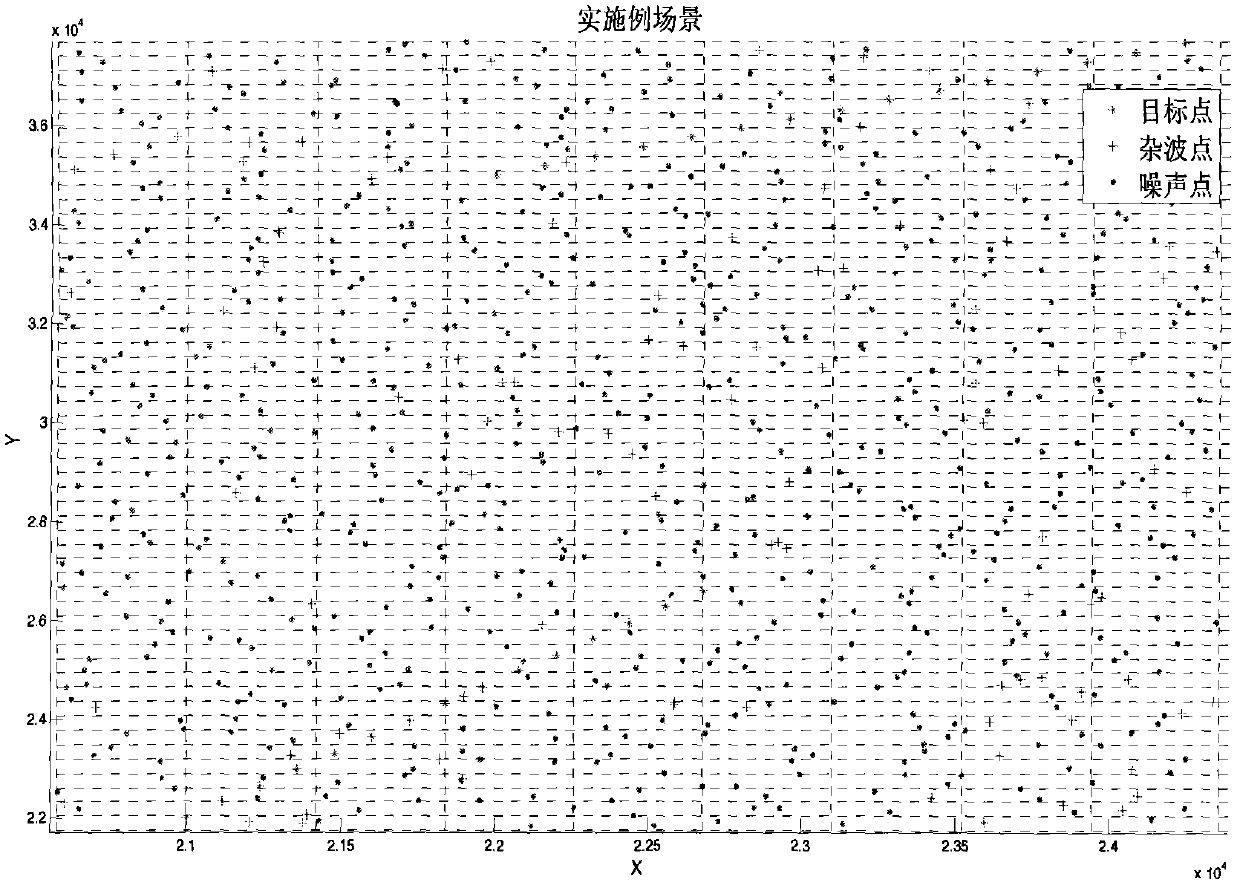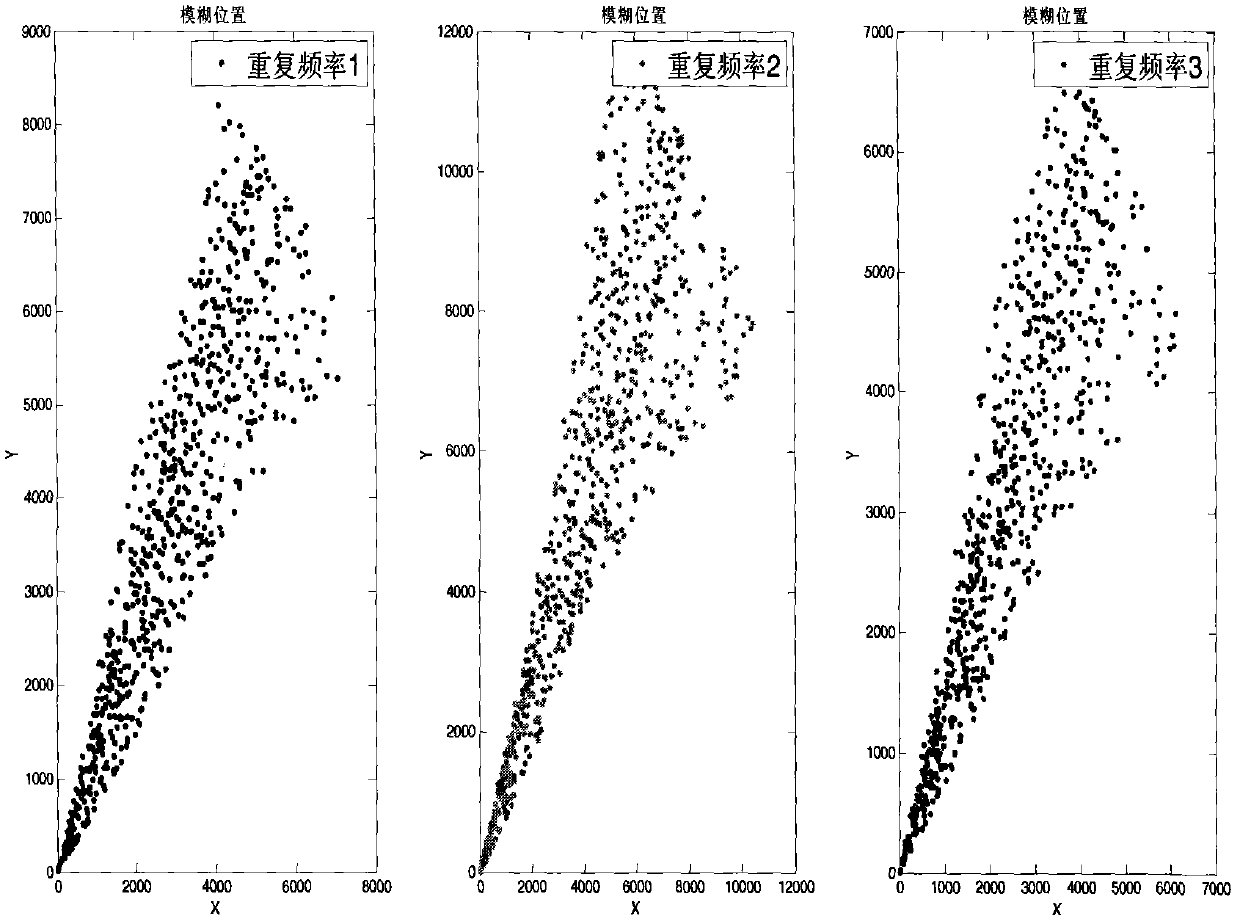HT-STC-TBD (Hough Transform and Successive Target Cancellation Based Track-Before-Detect) detection method for multiple weak targets under radar-ranging fuzzy condition
A HT-STC-TBD, fuzzy condition technology, applied in measurement devices, radio wave measurement systems, radio wave reflection/re-radiation, etc.
- Summary
- Abstract
- Description
- Claims
- Application Information
AI Technical Summary
Problems solved by technology
Method used
Image
Examples
Embodiment Construction
[0084] Below in conjunction with the accompanying drawings, the method for detecting many weak targets HT-STC-TBD under the radar ranging ambiguity condition of the present invention is described in detail (refer to the description attached) figure 1 ).
[0085] Example conditions: Assuming that two targets move in a straight line at a uniform speed on the X-Y plane, the initial position of target 1 (21km, 22km), the speed in x direction and the speed in y direction are (120m / s, 330m / s) respectively, and the initial position of target 2 (22km, 35km), the speed in the x direction and the speed in the y direction are (160m / s, 190m / s). The radar uses three different pulse repetition frequencies, each pulse repetition frequency f r They are 16000Hz, 11400Hz and 19400Hz respectively, the corresponding pulse repetition periods are 62μs, 87μs and 51μs respectively, the radar scanning period is T=1s, a total of 17 scanning periods are simulated, and the range-azimuth resolution unit ...
PUM
 Login to View More
Login to View More Abstract
Description
Claims
Application Information
 Login to View More
Login to View More - R&D
- Intellectual Property
- Life Sciences
- Materials
- Tech Scout
- Unparalleled Data Quality
- Higher Quality Content
- 60% Fewer Hallucinations
Browse by: Latest US Patents, China's latest patents, Technical Efficacy Thesaurus, Application Domain, Technology Topic, Popular Technical Reports.
© 2025 PatSnap. All rights reserved.Legal|Privacy policy|Modern Slavery Act Transparency Statement|Sitemap|About US| Contact US: help@patsnap.com



